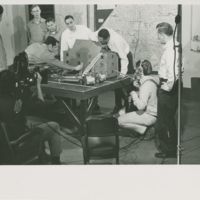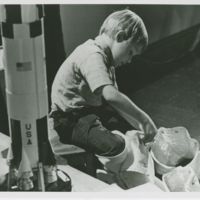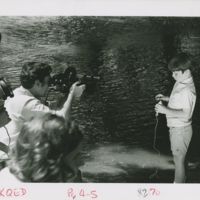From Concept to Production

Guide for Ripples, AIT Collection (click on the image to see document in its entirety)
Introduction to the Ripples program.
Out of the consortium of educators and television professionals and after the publication of the Television Guidelines for Early Childhood Education that followed it, the concept of a series called Ripples emerged. Descriptions of the program emphasized several key facets of how to improve educational television among children. Through the “Ripples experience” the teachers guide explains some of these distinctive facets:
- Understand basic ideas about the relationship between man [sic] in relation to himself and his environment.
- Some basic ideas concern the child living in the complex world of the 1970s
- Help children understand themselves as human beings growing up in everyday places and in everyday situations.
- Helping children build human values, extend knowledge, increase aesthetic sensitivity, and understand the changing nature of the real world.
- Programs reinforce each other by approaching the same ideas from several different points of view.
It was clear that the creators of Ripples viewed the program as more than simply information-based educational content, but rather strove to create programs that were evocative, inspirational, and perhaps even imagined to be interactive at some level. The emphases on “real world” experiences addressed in the program were paired with an attunement to “feelings and emotions,” as well as the unexpected outcomes born from introducing open-ended questions and providing a sensorium opened up by an audio-visual medium. The collaborative efforts of educators and television engineers were certainly expressed in these descriptions.
The program itself was made up of 35 individual episodes, all of which have been digitized as part of the IU Media Digitization and Preservation Initiative and are publicly available on Indiana University Media Collections Online, as well as on the final page of this exhibit. Descriptions for each episode can be found in a teacher’s handbook that was originally distributed to those using the series. In addition to these finalized materials, the AIT Paper Collection at the Moving Image Archive contains files related to Ripples’ during vairous stages of production, such as stills, including accompanying contact sheets, taken during the shooting of specific episodes, as well as scripts, technical reports for processing film and video recordings, licensing contracts, crew and talent releases, and invoices for music and sound effects used in the program.




